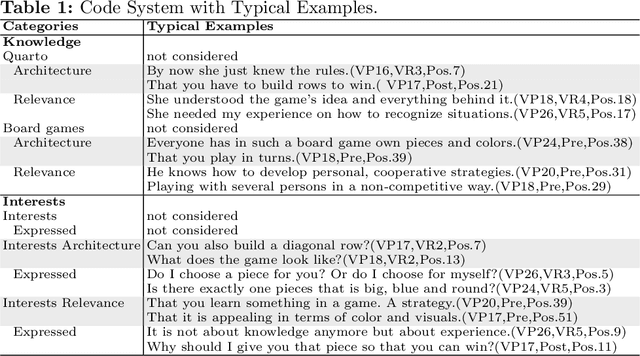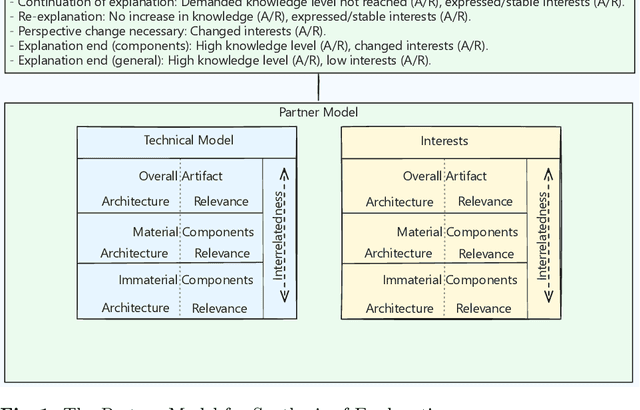Explainers' Mental Representations of Explainees' Needs in Everyday Explanations
Paper and Code
Nov 13, 2024



In explanations, explainers have mental representations of explainees' developing knowledge and shifting interests regarding the explanandum. These mental representations are dynamic in nature and develop over time, thereby enabling explainers to react to explainees' needs by adapting and customizing the explanation. XAI should be able to react to explainees' needs in a similar manner. Therefore, a component that incorporates aspects of explainers' mental representations of explainees is required. In this study, we took first steps by investigating explainers' mental representations in everyday explanations of technological artifacts. According to the dual nature theory, technological artifacts require explanations with two distinct perspectives, namely observable and measurable features addressing "Architecture" or interpretable aspects addressing "Relevance". We conducted extended semi structured pre-, post- and video recall-interviews with explainers (N=9) in the context of an explanation. The transcribed interviews were analyzed utilizing qualitative content analysis. The explainers' answers regarding the explainees' knowledge and interests with regard to the technological artifact emphasized the vagueness of early assumptions of explainers toward strong beliefs in the course of explanations. The assumed knowledge of explainees in the beginning is centered around Architecture and develops toward knowledge with regard to both Architecture and Relevance. In contrast, explainers assumed higher interests in Relevance in the beginning to interests regarding both Architecture and Relevance in the further course of explanations. Further, explainers often finished the explanation despite their perception that explainees still had gaps in knowledge. These findings are transferred into practical implications relevant for user models for adaptive explainable systems.
 Add to Chrome
Add to Chrome Add to Firefox
Add to Firefox Add to Edge
Add to Edge